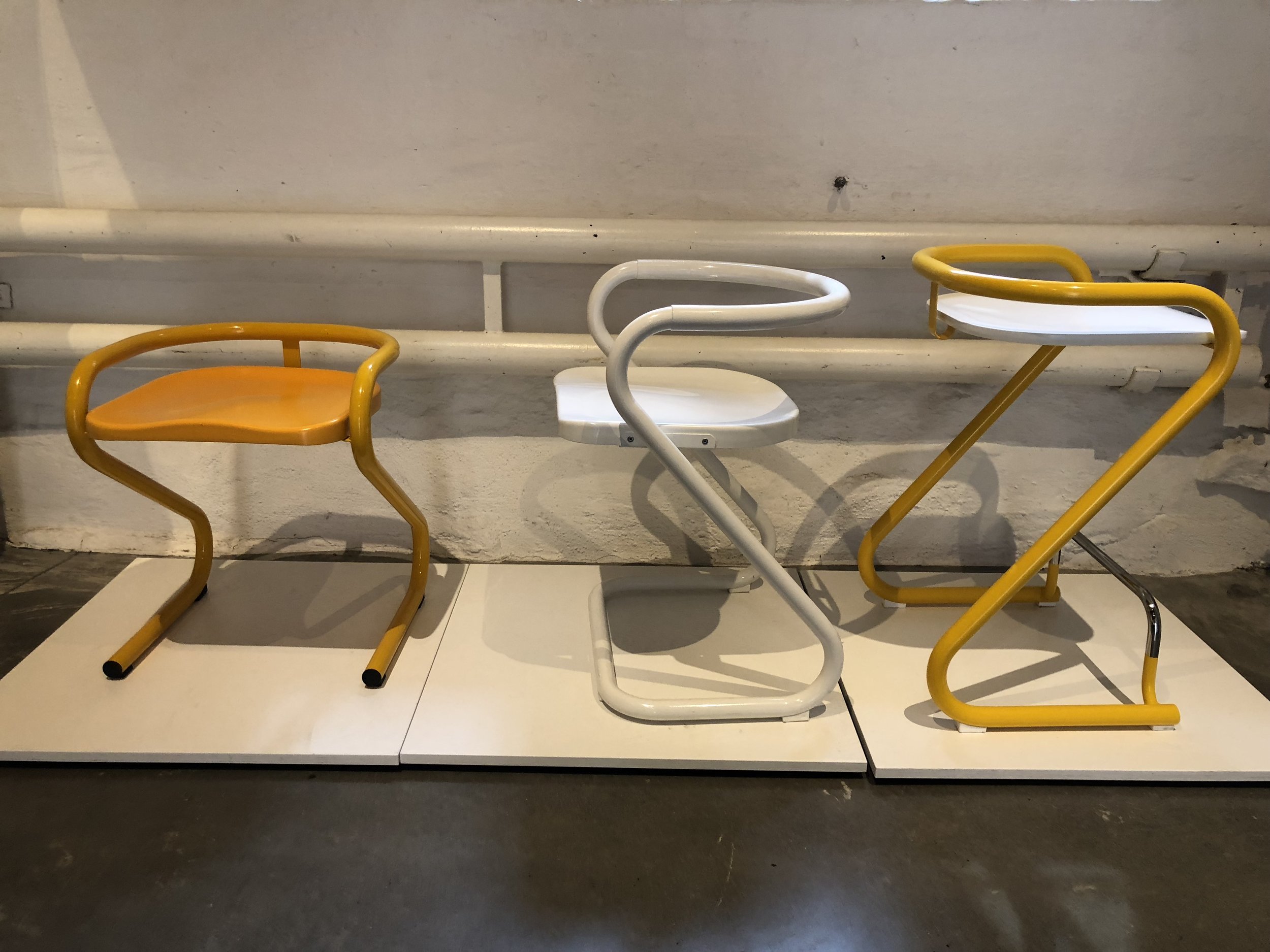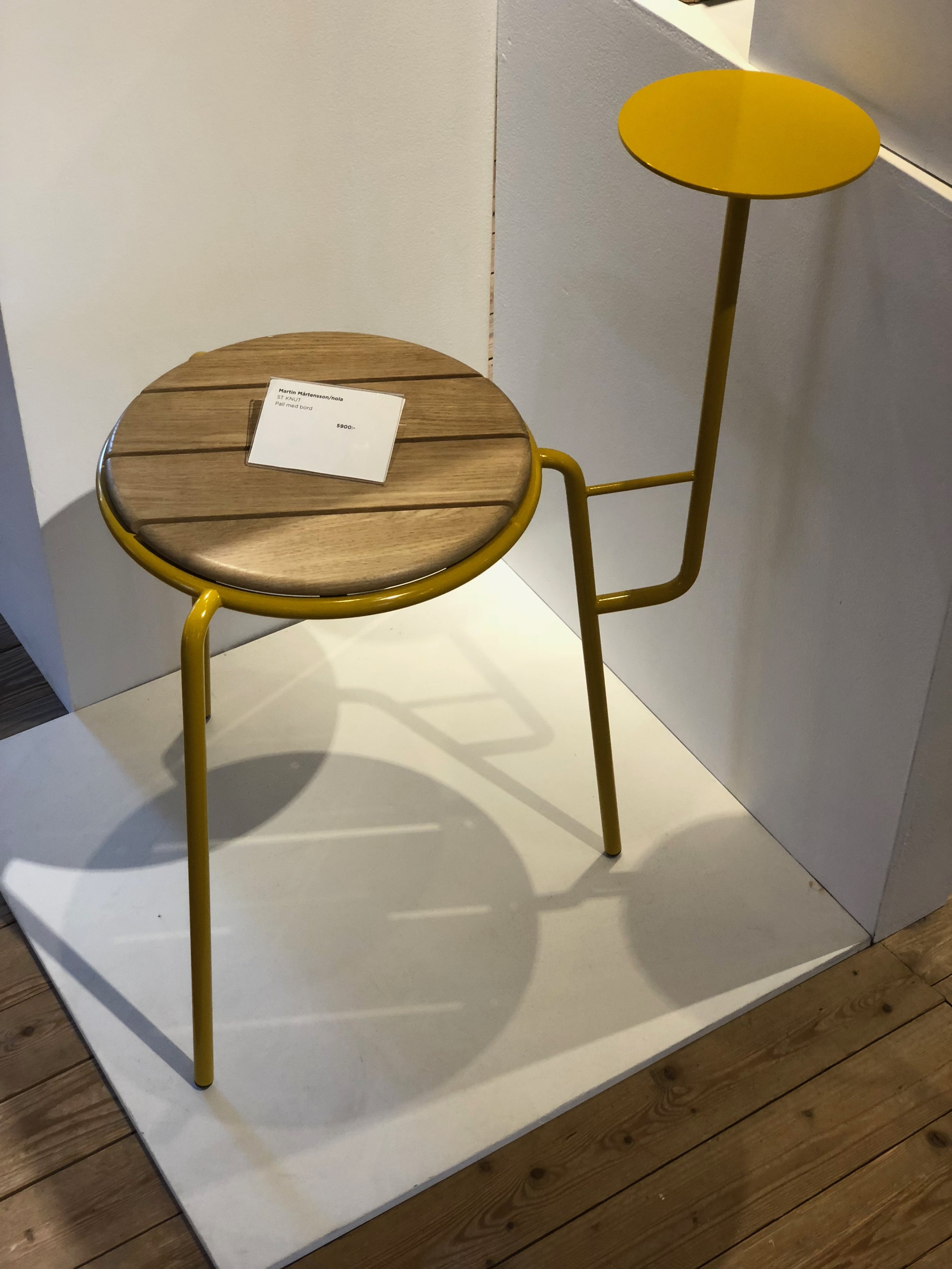Visiting the Form/Design Center in Malmö was a nice change of format, after having hit four design museums in rapid succession. The center is meant to be a knowledge hub and venue for inspiration, where people can attend lectures, participate in workshops, and view exhibitions
The ground floor has a cafe and bit of a community area for people and children to hang out. I really enjoyed seeing this Brio train set in there, having played with them myself when I was young.
The Danes have Lego, the Swedes have Brio.
Downstairs, they also have a small exhibition consisting of 10 locally designed and produced sustainable souvenir items, which were chosen from over 100 submissions from an open call.
Also on display was a collection of Swedish designed furniture called the S70 collection. Conceived in 1968, it was thought to be the furniture of the coming decade, for which it is named. It certainly embodies the post-modern design movement that was in full-swing at the time, and immediately reminds me of Stanley Kubrik’s film Clockwork Orange.
Upstairs on the second floor I found an exhibition from the School of Industrial Design at Lund University. The assignment was to produce a design that will increase sustainability in food production and distribution.
My favorite design was this oat milk kit. This stood out to me for a number of reasons. First of all, I suspect it would be the most impactful of all the designs in the exhibit, since I know how environmentally taxing the dairy industry is. It hits a second angle by allowing consumers to make their own oat milk at home, rather than getting it from a store. This cuts down on packaging and also reduces the significant carbon foot print associated with transporting a heavy liquid. Oatmilk is an environmentally friendlier dairy alternative than almond milk, or soy, which which can’t be grown locally in Sweden anyway. Finally, the design of the product itself anticipates and addresses many of the challenges of making oat milk at home. It seems the student really did their research on the user experience.
OATMILKING
Homemade oat milk is, in many aspects, more sustainable than buying both regular cows milk and oat milk in the store. Through making it at home, you don't need to buy any disposable packaging that's transported several miles in big trucks. The home-made oat milk is also 5 times cheaper than in the store, with 3KR per liter! The only think you need is 3 dl oats and 1 L water.
Making oat milk at home easily gets messy due to pouring the milk back and forth in different containers, and the amount of dishes for such a simple process is insane. Through straining directly in a funnel with a connectable sieve, you minimize both the number of steps in the process, and the number of dishes used
The entire third floor was a shop where some of the objects displayed elsewhere in the center could be purchased, as well as other locally designed or sustainable products, including this bicycle airbag/helmet that I started to see people wearing once I got to Copenhagen. Turns out it is actually designed/made in Malmö.
I also think this stool with integrated side table that they are selling is worth sharing. While not part of the S70 collection, it appears to have been inspired by it.
The Form/Design Center is worth checking out, and should only take about an hour to see. If you’re in Copenhagen, Malmö is just a short train ride away, and seems to have a lot of great restaurants and shopping. I only spent an afternoon there, but wish I had time to see what else the city has to offer.








